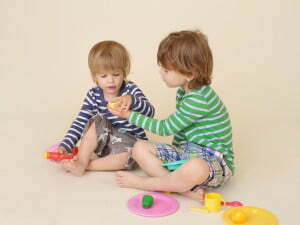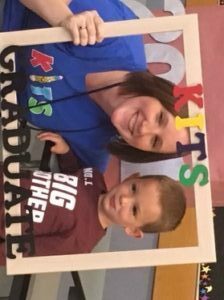Esta semana seguiremos hablando sobre maneras de aumentar su felicidad y ayudar a sus niños a ser más felices también. Comparto nuevamente un post nuestro del 2-16 sobre las maneras en que el movimiento ayuda a mejorar el aprendizaje y la capacidad cerebral. Lo bueno del movimiento es que ¡también ayuda a que las personas sean más felices! Entonces, vea nuestros tips para maneras de levantarse, salir al aire libre, y ser más felices.
Es marzo y los días son más cálidos. Estamos viendo un poco más del sol. Mientras se acerca la primavera, empezamos a pensar en salir más al aire libre. Y estar al aire libre nos da más oportunidad de movernos.
Todos sabemos que el movimiento es bueno para el cuerpo. Pero, ¿sabía que moverse también es bueno para la mente? ¡El movimiento puede conducir a mejor aprendizaje!
El movimiento físico puede ayudar al cerebro de varias formas. Primero, aumenta la cantidad de oxígeno que llega al cerebro. Segundo, puede causar cambios en los neurotransmisores (las sustancias químicas que llevan mensajes en el cerebro y crean nuevas vías de aprendizaje). Y finalmente, el movimiento puede ayudar a armar estructuras en el cerebro.
Algunos estudios han demostrado que el movimiento puede ayudar a mejorar las habilidades sociales de los niños. Cuando los niños se mueven durante sus lecciones, puedan aprender más vocabulario y alcanzar un mayor nivel académico.
Un estudio miró los cerebros de los niños mientras ellos pensaban y prestaban atención. Los niños en mejor forma física tuvieron patrones del flujo de sangre en el cerebro diferentes a los niños en peor forma física. Los patrones del flujo de sangre en los niños en buena forma física fueron asociados al mejor desempeño académico.
Entonces, ¿cómo puede usar estos estudios para ayudar a sus hijos a aprender mejor? Aquí hay algunas sugerencias:
- Muévase con sus niños. Salgan afuera para patear la pelota. Corran. Salten la cuerda. Haga que la sangre corra más en el cuerpo de sus niños para que más oxígeno llegue a sus cerebros.
- Intenten movimientos para practicar el equilibrio. Algunos estudios sugieren que hay conexiones entre el oído interno (que ayuda a mantener el equilibrio) y estimulación para el cerebro que conducen a mejor atención.
- Lean libros juntos con temas de movimiento, baile o el canto. Luego, párense para moverse juntos. Esto les puede ayudar a recordar vocabulario nuevo y el narrativo de los cuentos.
Cuando se mueve con su niño, puede estimular el crecimiento de su cerebro. El movimiento ayuda el cerebro y el cuerpo adulto también. Entonces, ¡salgan afuera en este tiempo más lindo y hagan algo saludable para todos!
[divider type=”standard” text=”Go to top” full_width=”no” width=”1/1″ el_position=”first last”]
Image:© Gbh007 | Dreamstime.com





